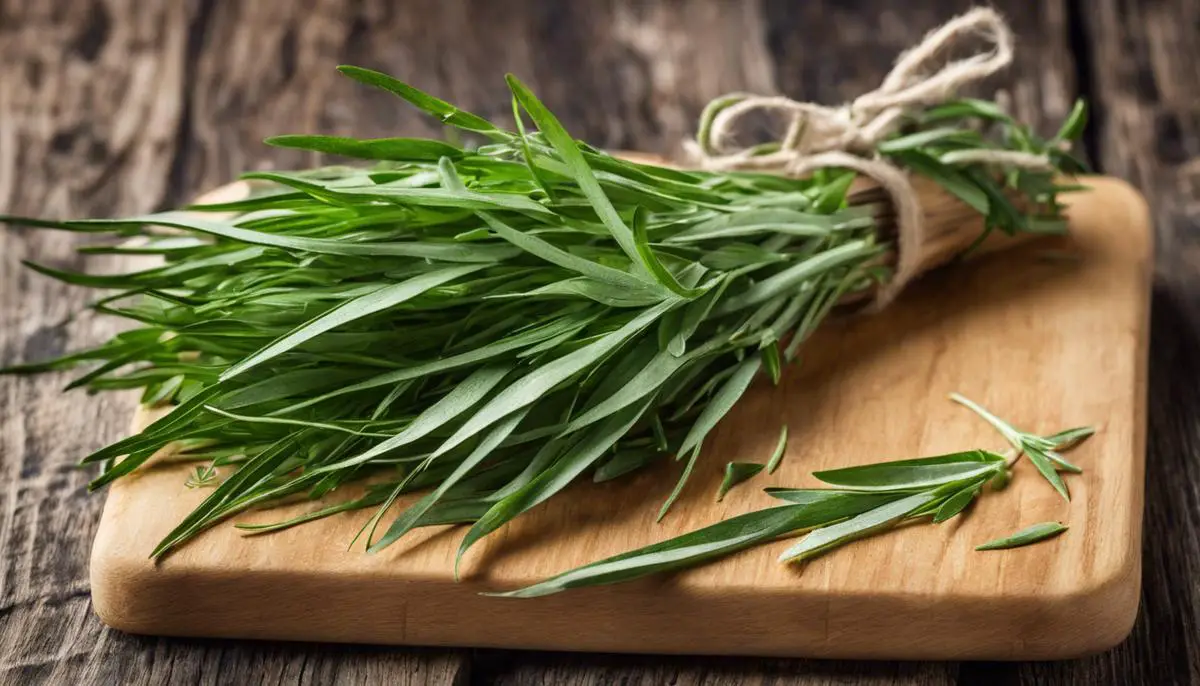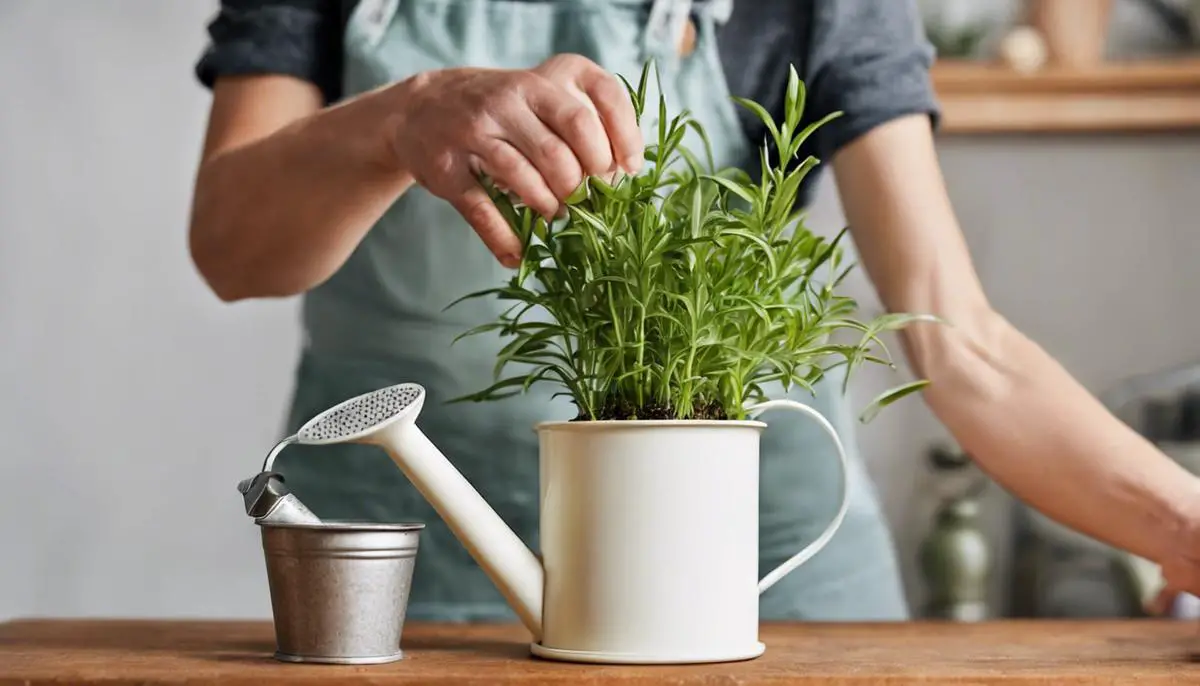
Tarragon Origins
Tarragon, a perennial herb in the sunflower family, has a rich history stretching back centuries. Originally from Asia and Russia, where it grew wild, its journey from obscure herb to global kitchen staple is a tale of trade, culinary exploration, and cultural exchange.
As early as the Middle Ages, tarragon began making its way across Europe, carried along the Silk Road. It was valued for its unique flavor and purported health benefits, such as aiding sleep, stimulating appetite, and improving mood and heart health. These medicinal uses contributed to its spread and adoption into various traditional medicines.
Culinary traditions from France to Russia embraced tarragon, incorporating it in distinct ways. In France, it became part of the classic "fines herbes" mix, crucial for sauces like béarnaise. In Russian and Middle Eastern dishes, tarragon found its way into soups, pickles, and beverages, showcasing its versatility.
In some cultures, tarragon was associated with spring and renewal, woven into rituals celebrating the changing seasons. This cultural connection helped cement its place in culinary traditions worldwide.
The plant's adaptability to different climates played a key role in its global spread. As explorers and colonists took plants to new lands, tarragon adapted to new environments, particularly thriving in the temperate regions of North America, where it found a new audience eager to experiment with its bold flavors.
Today, tarragon's journey continues as chefs and home cooks rediscover and reinvent its uses, blending traditional flavors with contemporary culinary techniques. Its evolution demonstrates the dynamic nature of food traditions and the interconnectedness of global culinary practices.
Culinary Uses of Tarragon
Tarragon is not just a spice; it's a bridge to experiencing the world's kitchens. Its earthy, slightly sweet flavor with subtle licorice hints elevates simple dishes into gourmet experiences. The use of tarragon in cooking is as varied as the regions it has touched.
In French cuisine, tarragon is a symbol of culinary excellence. When combined with butter, it transforms an ordinary steak into Steak au Poivre Vert, a dish with rich, complex flavors. Béarnaise sauce owes its creamy perfection and aromatic vigor to tarragon, becoming the perfect companion to grilled meats and fish.
In Italian cuisine, tarragon merges subtly into the background of dishes like risottos and pestos, offering a whisper of its presence without overwhelming the balance of flavors. Its compatibility with citrus also shines through in Italian vinaigrettes, dressing salads or grilled vegetables with a bright, refreshing zest.
In Eastern European countries, particularly Russia, tarragon takes on a bolder role. It steps into the spotlight in soups and meat dishes, imbuing them with a robust flavor profile. A distinctive use is in Tarkhun soda, a tarragon-flavored beverage that captures the herb's essence in a fizzy, refreshing drink.
The choice between fresh and dried tarragon presents options for chefs and home cooks. Fresh tarragon has a more vibrant, grassy taste, lending freshness to salads and sauces. Dried tarragon, with its more concentrated flavor, is optimal for long-cooked stews and braises where it can thoroughly infuse the dish.
Contemporary culinary adventures are also redefining tarragon's role. Chefs are pairing it with unconventional partners, finding that its familiarity can make even avant-garde dishes approachable. From tarragon-infused ice creams to cocktails where it plays against the spirituous nature of liquors, the herb continues to inspire.
Through its adaptability and the rich traditions it supports, tarragon not only seasons our food but our lives with its cultural storytelling and variety. It's a testament to how food can be both a comfort and an exploration—an enduring relationship between flavor and heritage that inspires culinary innovation across the globe.

Health Benefits of Tarragon
Tarragon's journey from a kitchen staple to a beacon of health is rich with tales of medicinal uses and contemporary scientific research. Rooted in folk medicine, this aromatic herb has been known for generations as a remedy for numerous ailments. Modern research has begun to reveal the truths that make tarragon not just a culinary delight but a noteworthy contributor to wellness.
The leaves of tarragon are packed with nutrients, including vitamins A and C, and minerals like magnesium, calcium, and iron. These nutritional constituents hint at tarragon's role in health maintenance and disease prevention.
Digestive health is one area where tarragon shines. Anecdotes have long suggested its use to soothe upset stomachs and stimulate appetite, an idea that modern studies support. Tarragon can prompt the body towards better digestion through its natural compounds, potentially easing discomforts and aiding the digestive system.
Though less empirically proven, the claim of tarragon as a sleep aid still persists in herbal medicine. Its mild sedative effects are often touted among herbalists, inviting further study to uncover the connection between tarragon and restful sleep.
Tarragon also plays a role in heart health. Its antioxidants target and neutralize free radicals, which are known to contribute to cardiovascular diseases.1 Potassium in tarragon is also crucial for regulating blood pressure, making it a heart-healthy food.
Tarragon's anti-inflammatory and antioxidant properties are also noteworthy. Inflammation, an underlying factor in numerous chronic conditions, is combatted by the flavonoids in tarragon's leaves.2 Its potent antioxidants engage in cellular defense mechanisms, shielding the body from oxidative stress.
However, while tarragon's benefits span digestion, sleep, heart health, and inflammation, the limitations of existing research call for a cautious embrace. The understanding of tarragon's properties in health is built on exploratory studies and traditional wisdom awaiting further scientific validation.
Within this herb lies a tale intertwining tradition with potential wellness benefits. Tarragon's journey ties not just the culinary world together but offers glimpses into a realm where food intertwines with medicine—a testament to the herb's legacy and promising future in enriching lives through taste and health. As the narrative of tarragon's beneficial properties unfolds, it stands as an emblem of both cultural heritage and holistic health.

Growing and Harvesting Tarragon
Growing and cultivating tarragon in your own garden or indoors blends the satisfaction of gardening with the culinary delights that await. For those embarking on this journey, the cultivation of tarragon offers an accessible yet nuanced horticultural experience, promising to imbue dishes with home-grown flavors that speak to effort and tradition.
Thriving in temperate climates, tarragon prefers a sunny spot, whether in outdoor garden beds or on a bright windowsill. This resilient and adaptable herb finds its peak flavor when given well-drained soil with a neutral to slightly acidic pH and ample sunlight. Under these conditions, tarragon plants burgeon with vibrant, green leaves ready to impart their essence into culinary creations.
Watering tarragon requires balance. The plant's roots prefer drier conditions, so heavy-handed watering may cause harm. Moderate watering, allowing the soil to dry slightly between applications, provides the optimal moisture level, encouraging strong root development without risking root rot.
Pruning is instrumental for enhancing plant shape, health, and leaf production. Regular trimming helps ward off legginess and stimulates the plant to bush out, providing more of the coveted aromatic leaves. Consistent pruning ensures tarragon remains bountiful and beautiful.
As harvest time approaches, the anticipation of reaping the rewards of diligent care culminates. Harvesting tarragon is akin to a time-honored ritual, where sprigs plucked at peak flavor—an amalgamation of care, sunlight, and nurturing—transform ordinary meals into tales of garden wonder.
Capturing tarragon's essence lies in the timing of harvest—preferably in the morning after dew has evaporated but before the sun's peak—and in storage methods. Fresh tarragon can be wrapped gently in a moist paper towel, placed in a plastic bag, and stored in the refrigerator's crisper, retaining its vibrant flavor for a week or longer. Drying or freezing offers routes to preserve these flavors well into winter. Dried tarragon retains much of its potent flavor, perfect for stews and marinades, while frozen tarragon preserves the fresh zestiness ideal for sauces and dressings.
Growing tarragon marries the joy of gardening with the art of cooking, allowing one to balance nurturing growth and celebrating harvest. From the sun-kissed garden to the heart of the kitchen, tarragon stands as a testament to the beauty of growth and the pleasure of taste, enriching meals and the experience of cooking with the essence of personal care and the triumphs of a gardener's efforts.

- Obolskiy D, Pischel I, Feistel B, Glotov N, Heinrich M. Artemisia dracunculus L. (tarragon): a critical review of its traditional use, chemical composition, pharmacology, and safety. J Agric Food Chem. 2011;59(21):11367-11384.
- Sharafati Chaleshtori R, Rokni N, Razavilar V, Kopaei MR. The evaluation of the antibacterial and antioxidant activity of tarragon (Artemisia dracunculus L.) essential oil and its chemical composition. Jundishapur J Microbiol. 2013;6(9):e7877.



